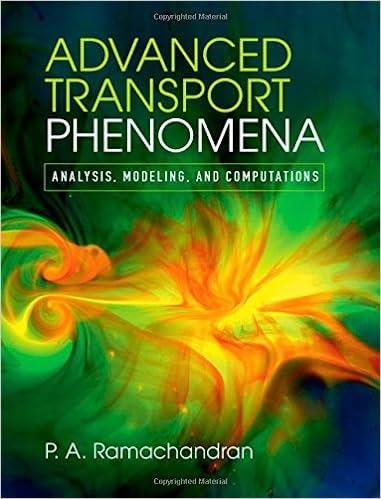The following problem arises in gas absorption with fast reaction. The notations have been slightly changed from
Question:
The following problem arises in gas absorption with fast reaction. The notations have been slightly changed from Eq. (10.5) earlier:
\[\begin{equation*}\epsilon^{2} \frac{d^{2} c_{\mathrm{A}}}{d x^{2}}=c_{\mathrm{A}}\left[1+q^{*} c_{\mathrm{A}}-q^{*} p_{x=0}(x-1)\right] \tag{14.58}\end{equation*}\]
where \(q^{*}\) is defined as the reciprocal of \(q\) in Eq. (10.44). The parameter \(\epsilon\) is the reciprocal of \(H a\). The boundary conditions for the diffusing gas \(c_{\mathrm{A}}\) are \(c(x=0)=1\) and \(c(x=1)=0\).
The problem has two interesting characteristics. (i) The solution is of a boundary-layer type for \(H a \rightarrow \infty\). (ii) An undetermined parameter \(p_{x=0}\), the slope of the concentration gradient, appears. This parameter is not known at the start and can only be estimated a posteriori.
Here we wish to examine the solution for large \(H a\). For fast reaction \(H a\) is large and hence \(\epsilon\) is a small parameter, leading to a singular perturbation problem. Show that the solution for \(\epsilon\) equal to zero leads to an instantaneous reaction profile and develop the next approximation, which is approximate to \(O(\epsilon)^{2}\). Find the enhancement factor. Then use the results and find the next-higher-order solution.
![]()

Step by Step Answer:

Advanced Transport Phenomena Analysis Modeling And Computations
ISBN: 9780521762618
1st Edition
Authors: P. A. Ramachandran





